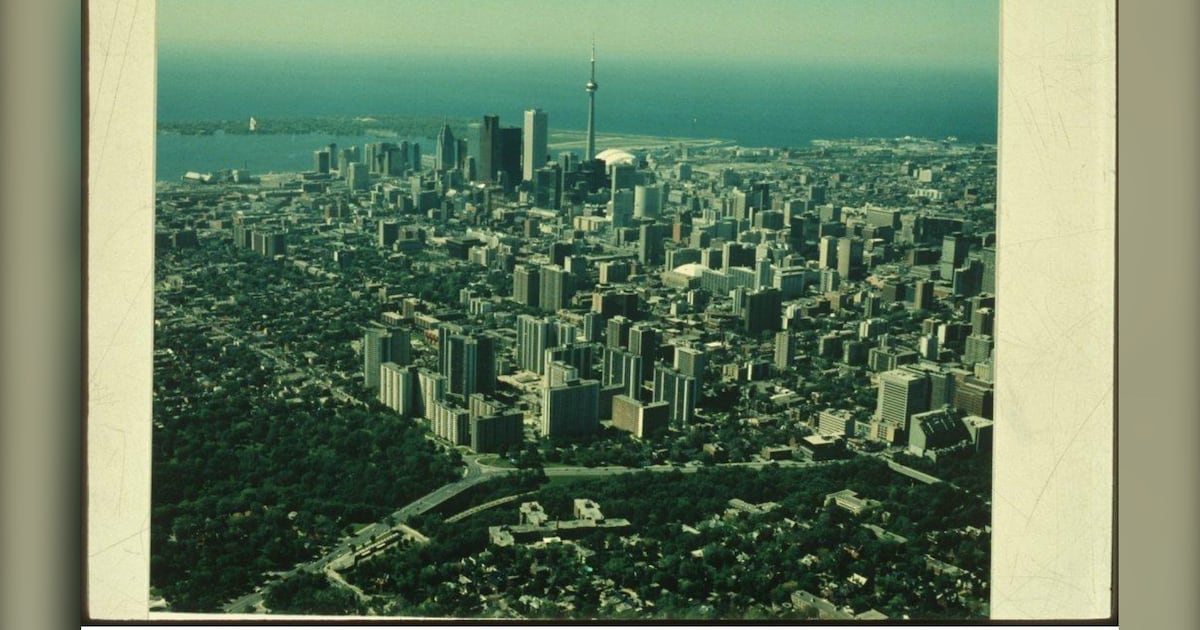Top Stories
Toronto Housing Costs Skyrocket Since Last Blue Jays World Series

UPDATE: Housing costs in Toronto have surged dramatically since the Blue Jays last competed in the World Series over three decades ago. New data reveals that the average home price in September 2025 has skyrocketed to $1,059,377, a staggering 417% increase from the average price of $206,490 in 1993, adjusted for inflation.
This urgent report from Zoocasa highlights the stark changes in Toronto’s housing market, showcasing how affordability has plummeted as the city has transformed. In 1993, a one-bedroom apartment cost an average of $627 per month, which would be approximately $1,206 today. Fast forward to September 2025, and that same apartment now rents for around $2,295, leaving many residents feeling the financial squeeze.
Authorities confirm that factors driving these costs include soaring land values and stringent zoning laws that limit new developments. Carolyn Whitzman, a senior housing researcher, stated, “It’s a really different landscape… things have gone downhill since the last time Toronto was in the World Series.”
Toronto’s population has also surged, growing from 4.6 million in 1993 to approximately 7.6 million in 2024, intensifying the pressure on the housing market. Meanwhile, average incomes have not kept pace, rising from $48,000 in 1993 to only $60,800 today. This disparity means that homebuyers with a median income of $100,400 now face a daunting price-to-income ratio of 11.8 times, requiring them to allocate nearly 77% of their income towards mortgage payments.
Matti Siemiatycki, director of the Infrastructure Institute, noted that many traditional neighborhoods remain zoned exclusively for single-family homes. “Many single-family home neighborhoods look almost identical to the way they looked in 1993,” he said, while highlighting the contrast with newer high-rise developments that have changed the city’s skyline.
The construction industry is also grappling with rising costs, driven by increases in materials like steel and ongoing labor shortages. Karen Chapple, director of the School of Cities, emphasized, “We’ve seen an acceleration of construction costs… related to the price of steel, primarily, but also other materials.”
As Toronto continues to evolve into a more vertical city, the human impact is profound. Residents report feeling increasingly squeezed out of the housing market, making it difficult for low-to-middle-class households to secure affordable living spaces. The CivicAction report from June serves as a stark reminder of the challenges faced today.
WHAT’S NEXT: With the Blue Jays poised to return to the World Series, attention turns to the implications of these housing trends in a city that has changed dramatically. Experts warn that without significant policy changes and new developments, the crisis of affordability will only deepen.
This vital information is crucial for anyone tracking Toronto’s housing market and the broader implications for residents. As the city celebrates its sports heritage, it must also confront the pressing reality of its housing crisis. Share this article to raise awareness of the urgent challenges facing Toronto today.
-

 World4 months ago
World4 months agoScientists Unearth Ancient Antarctic Ice to Unlock Climate Secrets
-

 Entertainment4 months ago
Entertainment4 months agoTrump and McCormick to Announce $70 Billion Energy Investments
-

 Lifestyle4 months ago
Lifestyle4 months agoTransLink Launches Food Truck Program to Boost Revenue in Vancouver
-

 Science4 months ago
Science4 months agoFour Astronauts Return to Earth After International Space Station Mission
-

 Technology2 months ago
Technology2 months agoApple Notes Enhances Functionality with Markdown Support in macOS 26
-

 Top Stories3 weeks ago
Top Stories3 weeks agoUrgent Update: Fatal Crash on Highway 99 Claims Life of Pitt Meadows Man
-

 Sports4 months ago
Sports4 months agoSearch Underway for Missing Hunter Amid Hokkaido Bear Emergency
-

 Politics3 months ago
Politics3 months agoUkrainian Tennis Star Elina Svitolina Faces Death Threats Online
-

 Technology4 months ago
Technology4 months agoFrosthaven Launches Early Access on July 31, 2025
-

 Politics4 months ago
Politics4 months agoCarney Engages First Nations Leaders at Development Law Summit
-

 Entertainment4 months ago
Entertainment4 months agoCalgary Theatre Troupe Revives Magic at Winnipeg Fringe Festival
-

 Top Stories1 week ago
Top Stories1 week agoFamily Remembers Beverley Rowbotham 25 Years After Murder





















